Probably everyone has seen people with bulging veins in their arms. Some believe that this is the norm or individual characteristic of a person. In fact, the veins need to be hidden under the skin and any change is a reason to think about your health. In addition to swelling of the veins, discomfort or a change in skin tone can be an alarm signal.
Are there any varicose veins in the upper extremities?
Varicose veins are a vascular disease. It can affect any vessel and appear anywhere on the body. Given that overload is the provoking factor, then most often varicose veins affect the limbs of the body. The disease occurs mainly in the legs, but varicose veins also occur in the arms. According to the international classification (MKB-10) it corresponds to the code I86.
Varicose veins of the upper extremities are easily recognized - the veins of the arm and forearm swell and look like blue snakes. The disease more often affects women over 50, as well as male athletes and bodybuilders.
Convex and swollen veins: is there a high risk of varicose veins?
Under excessive stress, the venous walls stretch and the venous valves cannot fully perform their functions. If your veins looked normal before, but are now swollen, you should see your doctor for a detailed examination. The earlier a problem is detected, the easier it is to treat.
If changes occur in the veins, the risk of varicose veins is really high.
In addition to external unaesthetic manifestations, varicose veins affect the patient's well-being, causing pain and provoking certain complexes.
Features of varicose veins of the upper extremities
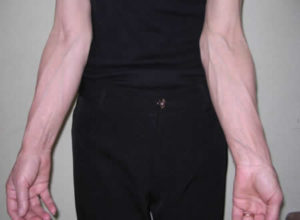
The first changes in the varicose veins of the hands appear as blue nodules. After a while, they may disappear and then reappear.
This suggests that the veins cannot cope with the increased load, but recover quickly when the provoking factor is eliminated.
In the absence of timely treatment, nodules in the veins of the hands will be monitored constantly, and then the expansion will affect the longer part of the vessel. In this case, the vessel swells noticeably, which often attracts the patient's attention and forces him to consult a doctor.
Other causes
Not only overload has a negative effect on the vessels. Other reasons for the extension could be:
- Stress.
- Oral contraceptives or hormonal imbalance in women.
- Smoking and alcohol abuse.
- Intensive exercises.
- Unbalanced diet. Read about proper diet for varicose veins here.
- Heredity.
The hormonal background has a strong influence on the condition of blood vessels. As you know, it is less stable in women than in men.
Symptoms of the disorder - pay attention!
Even if a person is unaware of the existence of such a problem as varicose veins, he should be warned of the following changes:
- Puffiness.
- Burning and discomfort.
- Rapid fatigue and weakness.
- Numbness or soreness.
- The contrast between the veins and the color of the skin is clearly visible.
- Lifting the arms up reduces the size of the veins.
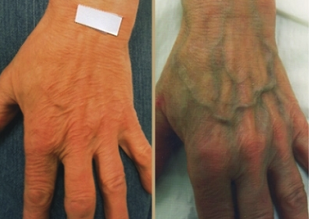
In thin people with thin skin, the veins may look swollen. However, this is not a pathology, but a feature of the body.
If this symptom is observed from birth and is not accompanied by other symptoms, do not worry.
Looking at a picture of varicose veins on the arms and a healthy limb, you will immediately notice the difference and know what to look for.
Treatment methods
The tactics of treating varicose veins in the hands depend on the stage of the disease. In the initial stages conservative methods of treatment are used, in the later stages surgical.
People at risk are advised to engage in the prevention of varicose veins to avoid dangerous complications.
Conservative treatment includes the use of special compression knitwear, the appointment of special drugs, diet and physiotherapy. All this is aimed at increasing the tone of the veins, strengthening the blood vessels and reducing their permeability.
The medical leotard is represented by special gloves or sleeves made of special materials. Underwear should be worn at all times to provide mechanical support to the dishes and prevent them from expanding. The degree of compression is chosen by the physician, taking into account the neglect of the pathology.
Treatment of late-stage varicose veins of the hands
When deep veins are affected, limb function may be impaired. The person experiences heaviness, pain, discomfort, becomes unable to perform normal work.
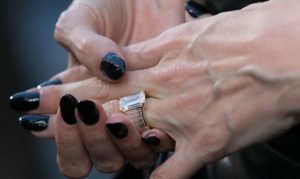
Surgery is used in the later stages. Some of the most effective and safe methods are laser correction and sclerotherapy. Their advantages are the following:
- Painlessness.
- No scars or scars.
- Fast tissue repair.
- Good cosmetic result.
In sclerotherapy, a positive effect may appear a few weeks after the procedure. It only takes a few minutes. The patient is injected into a bulging vein to inject a sclerosing agent.
The process is absolutely painless. The adhesion of the veins occurs under the action of the drug and does not require the surgeon to cut the tissue. To prevent recurrence, the patient should wear a compression garment.
The advantage of modern methods is that they do not have a negative impact on the surrounding tissues, remove the skin incision and almost never cause complications.
Hirudotherapy
Hirudotherapy is popular for many vascular diseases. Despite the fact that this is a non-traditional method of treatment, it requires compliance with certain rules. It is not recommended to place leeches alone. Only healthy worms that are used only once are suitable for this procedure.
The healing secretion released by leeches helps to strengthen blood vessels and thin the blood. Helps reduce swelling, eliminate blood stasis, normalize microcirculation and restore the structure of the vein.
Home treatment
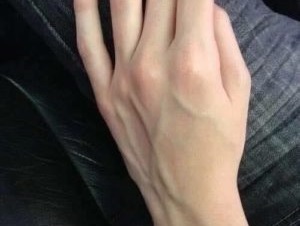
Many patients try to cure varicose veins on their hands with folk remedies. As monotherapy, they are suitable only in the very first stage of the disease.
If varicose veins are severe enough, folk recipes can be used only in addition to the basic scheme prescribed by the doctor.
Chestnut-based remedies help well against varicose veins. The healing properties of this plant are also recognized by official medicine, as chestnut is part of many venotonic ointments.
You can make your own cream at home. To do this, the chestnuts are crushed and mixed with melted lard. The drug is used externally, using a light rub on the affected area.
Compresses made from cabbage or wormwood leaves have a positive effect in the treatment of varicose veins. They are crushed in a blender with the addition of a small amount of butter or kefir so that the beneficial substances penetrate deeper into the skin. The mixture is impregnated with gauze and applied to varicose veins.
One of the popular methods to get rid of any disease is the bathroom.
Prevention of varicose veins of the hands
To prevent varicose veins on the hands, doctors recommend:
- Limit physical activity in the upper extremities. Girls should not lift weights, and male athletes should use compression garments during training.
- Change the activity type. People with a sedentary office work on the keyboard, they need to take breaks, during which they raise their hands up and stretch their joints.
- Eat right. Antioxidants and vitamins are useful for strengthening blood vessels, especially C and PP. In the daily diet you should include more fresh vegetables and fruits, as well as at least 1, 5 liters of clean water.
- When taking a contrast shower, don't forget about your hands. Cold water trains blood vessels, prevents the formation of nodules and allows you to achieve the desired tone of the veins.
- Control your weight. Excess body weight creates a constant load on the vessels and over time their strength decreases.
- Minimize negative factors. Alcohol, smoking, stress - all this has a bad effect on the elasticity of blood vessels and their tone.
Possible complications
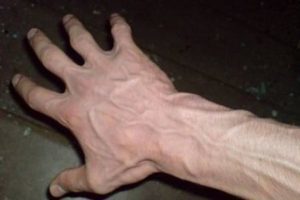
The veins of the hands are not only a cosmetic defect, but also a dangerous medical condition.
Blood stasis is formed in the enlargement zones, which leads to insufficient nutrition of neighboring tissues.
An area with poor microcirculation eventually becomes the focus of an inflammatory and even infectious process.
In the future, this can lead to thrombophlebitis or blockage of the vascular lumen by a blood clot.
The formation of a blood clot is facilitated by a slowing of blood circulation in the area of expansion, increased coagulation and impaired structure of the vascular wall. Thrombosis is more common in the lower extremities, but prolonged squeezing of the arm or awkward position can cause venous arms and blood clots to form.
Thrombophlebitis may be suspected if the patient complains of pain and swelling of the arm and cyanosis increases with a clenched fist. Severe disturbance of blood flow in a particular area causes necrosis of adjacent tissues and leads to the need for amputation of limbs.
Varicose veins in men are less common due to the fact that the stronger sex is more emotionally stable. However, in addition to stress, other triggers can cause venous dilatation even in young men.
Feeling of heaviness in the arm, evening fatigue and the appearance of nodules are some of the first symptoms of varicose veins of the upper extremities. Taking care of your health and regular medical examinations will help you maintain your health and beautiful appearance.























